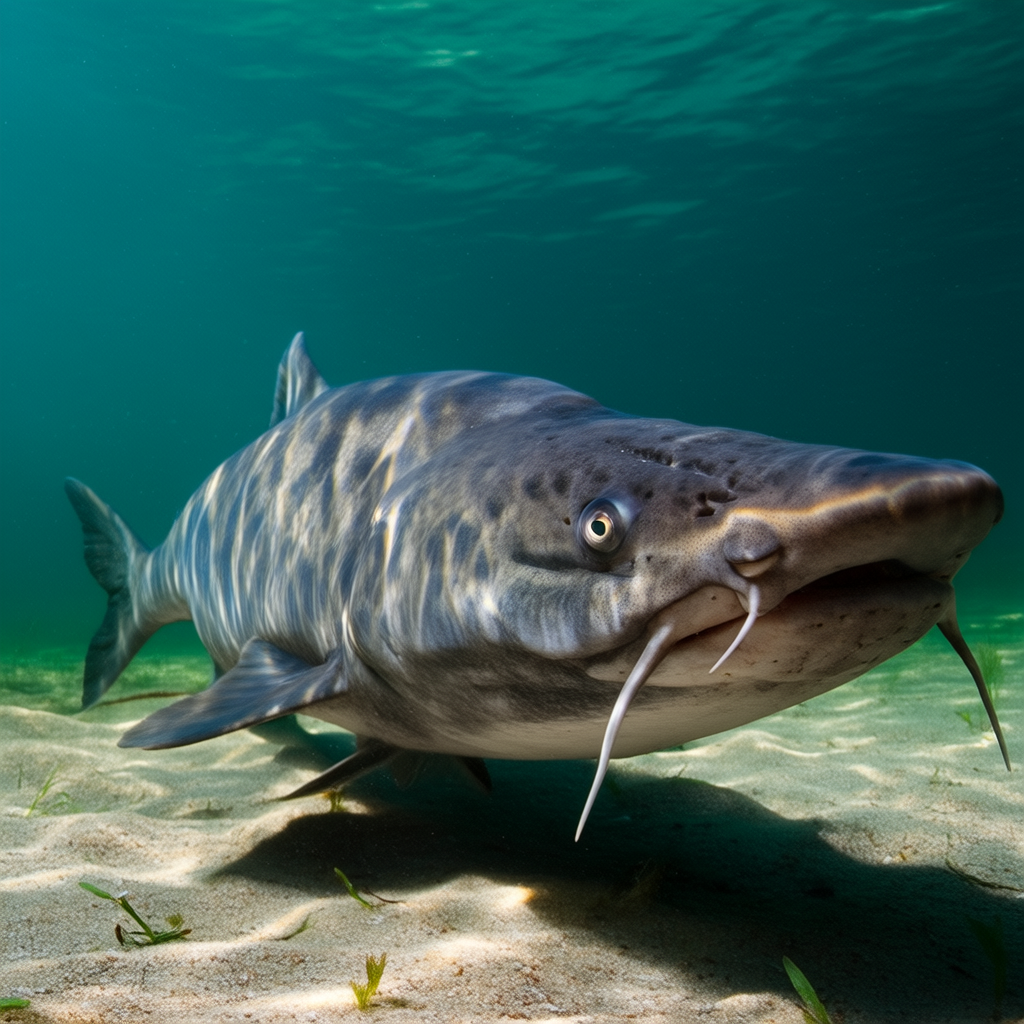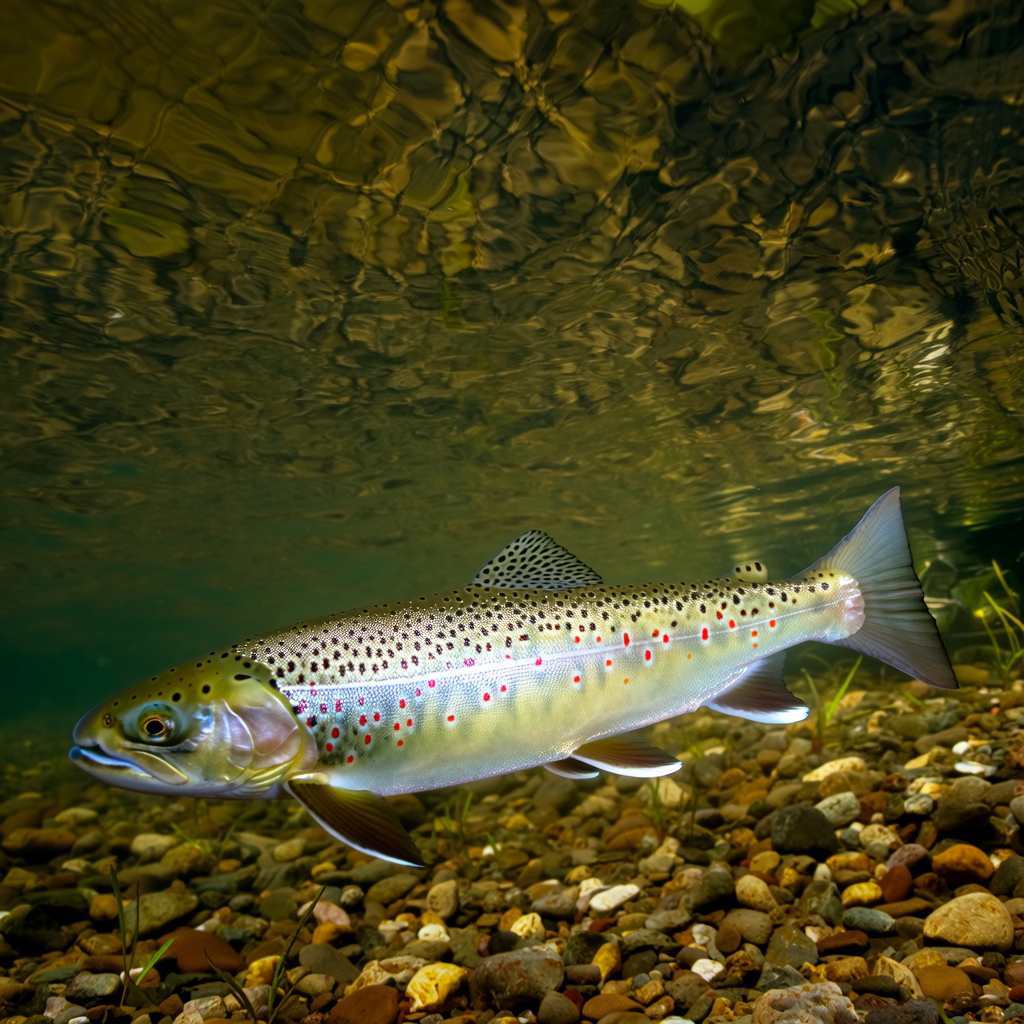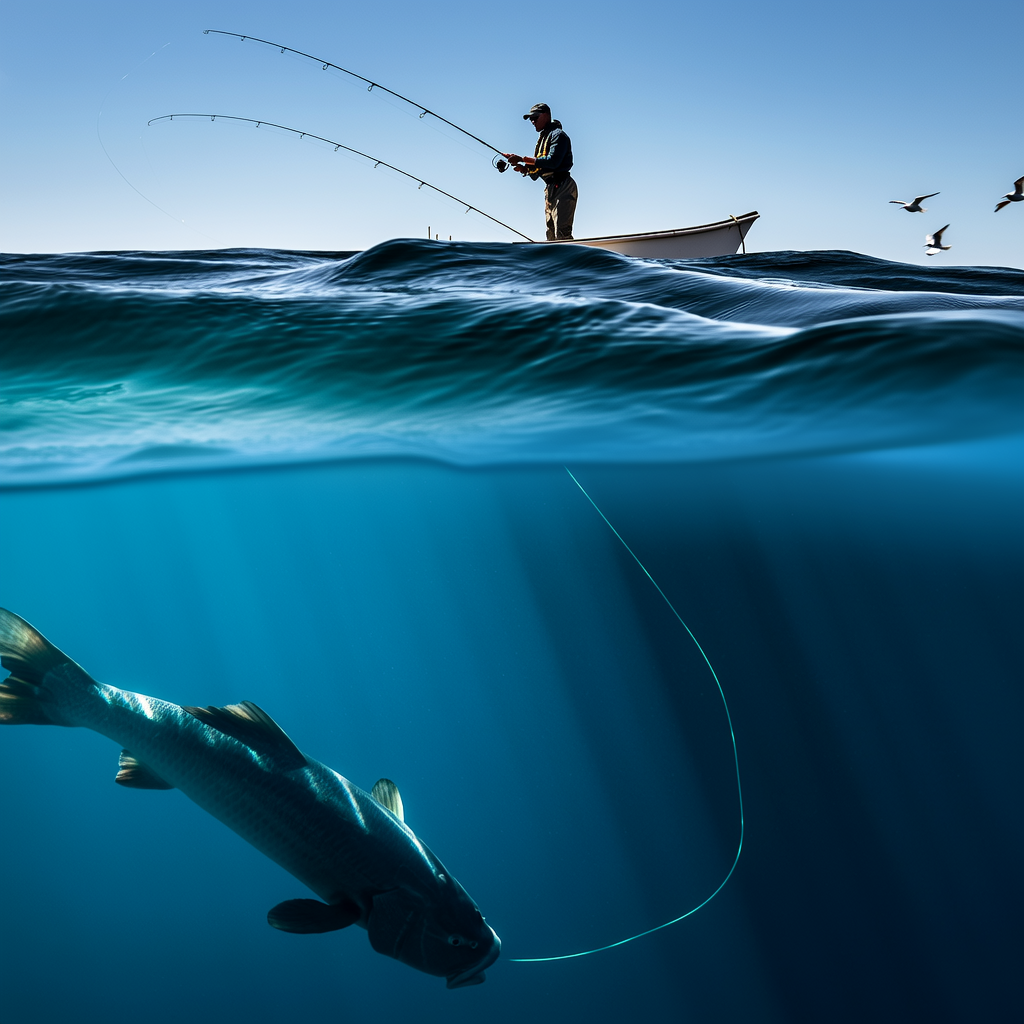Flathead Catfish: The King of Freshwater Predators
The flathead catfish (Pylodictis olivaris) is one of the most intriguing species in freshwater ecosystems. Renowned for its size, predatory nature, and adaptability, it has captured the interest of anglers, scientists, and environmentalists alike. This comprehensive guide delves into every aspect of the flathead catfish, from its biological characteristics to its role in aquatic ecosystems.
Biology of the Flathead Catfish
Physical Characteristics
The flathead catfish stands out due to its distinctive physical traits. It possesses a broad, flattened head that gives the species its name. Its body color ranges from yellowish-brown to olive-green, with dark mottling that helps camouflage it in murky waters. Unlike other catfish species, the flathead’s lower jaw protrudes beyond the upper jaw, making it an efficient predator.
This species can grow up to 5 feet in length and weigh over 100 pounds, though specimens exceeding 50 pounds are considered rare. Their large mouths and sharp teeth allow them to consume prey much larger than themselves.
Sensory Adaptations
Flathead catfish rely heavily on their senses to navigate and hunt. They have highly sensitive barbels around their mouths, which detect chemical cues in the water. These sensory organs help them locate food even in low visibility conditions. Additionally, their lateral line system allows them to sense vibrations caused by nearby movements, further enhancing their hunting prowess.
Growth and Lifespan
Flathead catfish exhibit rapid growth during their early years. Juveniles can gain several inches per year before reaching maturity at around 5 to 7 years of age. Once mature, their growth slows but continues throughout their lives. On average, they live between 12 and 20 years, with some individuals surviving well into their twenties under optimal conditions.
Factors such as water temperature, food availability, and habitat quality significantly influence their growth rates and overall health. In nutrient-rich environments, flatheads tend to grow faster and reach greater sizes compared to those in less favorable habitats.
Habitat and Distribution
Naturally occurring across much of North America, the flathead catfish thrives in various freshwater systems. From large rivers and reservoirs to smaller tributaries, these fish demonstrate remarkable adaptability when it comes to choosing a home.
Ideal Living Conditions
Flathead catfish prefer slow-moving or stagnant waters where they can ambush unsuspecting prey. They often seek shelter in submerged structures like logs, rocks, and undercut banks during the day, emerging at night to feed. These nocturnal habits make them particularly elusive to casual observers.
Temperature plays a crucial role in determining their activity levels. During warmer months, flatheads become more active, while colder temperatures drive them deeper into their hiding spots. Water clarity also affects their behavior; although they tolerate turbid conditions, clearer waters may reduce their effectiveness as ambush predators.
Geographic Range
The native range of the flathead catfish extends from the Mississippi River basin to parts of Texas, Oklahoma, Arkansas, Missouri, Kansas, and Illinois. Over time, humans have introduced them to non-native regions, including states along the Pacific Coast and international locations such as Mexico and South Korea.
While these introductions have expanded their distribution, they sometimes lead to ecological imbalances. As top predators, flathead catfish can outcompete native species for resources, potentially disrupting local food webs.
Diet and Feeding Habits
As apex predators in many freshwater ecosystems, flathead catfish play a critical role in maintaining balance within their environment. Their diet primarily consists of other fish, including sunfish, minnows, and even smaller catfish. However, they occasionally consume crustaceans, insects, and carrion when opportunities arise.
Hunting Techniques
Flathead catfish employ stealth and patience when pursuing prey. By lying motionless near cover, they wait until an unsuspecting victim ventures too close before striking swiftly. Their powerful jaws and muscular bodies enable them to overpower targets far larger than expected.
In addition to active predation, flatheads scavenge opportunistically. This flexibility ensures they always find enough sustenance regardless of seasonal changes in prey abundance.
Impact on Ecosystems
By preying on weaker or slower fish, flathead catfish contribute to natural selection processes within aquatic communities. However, excessive populations—often resulting from human introductions—can destabilize ecosystems by reducing biodiversity. Careful management practices aim to mitigate these negative effects while preserving the species’ ecological value.
Fishing for Flathead Catfish
Anglers prize flathead catfish not only for their impressive size but also for the challenge they present. Successfully catching one requires knowledge of their behaviors, preferred baits, and effective tackle setups.
Best Baits and Lures
Live bait remains the go-to choice for targeting flathead catfish. Popular options include bluegill, shad, and skipjack herring. Using freshly caught or store-bought bait increases your chances of attracting a hungry flathead. Alternatively, cut bait works well, especially during times when live offerings prove impractical.
Artificial lures rarely produce results with flatheads due to their preference for natural foods. However, scent-infused soft plastics might entice bites under certain circumstances.
Tackle Recommendations
Given their strength and size, flathead catfish demand robust fishing gear. Heavy-action rods paired with high-capacity reels ensure you maintain control during prolonged battles. Braided line offers superior sensitivity and abrasion resistance compared to monofilament alternatives.
Hook selection depends on bait type. Circle hooks work exceptionally well with live presentations, minimizing injury to both fish and angler. J-hooks remain viable for cut bait scenarios, provided you set them promptly after detecting a bite.
Techniques for Success
Fishing for flathead catfish involves more than simply casting and waiting. Understanding their movement patterns and feeding windows improves your odds of success. Nighttime trips yield better results since flatheads become more active after dark.
Positioning your boat near likely holding areas—such as fallen trees, bridge pilings, or deep holes—increases exposure to potential catches. Drift fishing allows you to cover extensive territory efficiently, while anchor-based tactics focus efforts on specific hotspots.
Conservation Efforts
Despite their resilience, flathead catfish face threats from habitat degradation, pollution, and overfishing. Conservation initiatives strive to protect this valuable resource while promoting sustainable recreational opportunities.
Habitat Restoration
Efforts to restore degraded habitats benefit flathead catfish populations immensely. Reintroducing woody debris into river systems creates essential cover for juveniles and adults alike. Restoring riparian vegetation stabilizes streambanks, reducing sediment loads that harm water quality.
Managing flow regimes in regulated rivers helps maintain suitable spawning and rearing conditions. Collaborative projects involving government agencies, private organizations, and local stakeholders aim to address these challenges comprehensively.
Regulatory Measures
State wildlife departments implement regulations designed to conserve flathead catfish stocks. Bag limits, size restrictions, and closed seasons protect vulnerable life stages while allowing harvests within acceptable parameters. Educating anglers about responsible practices reinforces these measures.
Monitoring programs track population trends through scientific surveys and public reporting systems. Data collected informs adaptive management strategies tailored to individual water bodies’ needs.
Culinary Uses of Flathead Catfish
Beyond their sporting appeal, flathead catfish offer delicious dining possibilities. Their firm, white flesh boasts mild flavor profiles ideal for grilling, frying, baking, or smoking. Proper handling and preparation enhance taste and texture qualities.
Preparation Tips
Start by filleting fresh-caught flatheads immediately upon landing. Removing scales and skin reduces undesirable flavors associated with wild-caught specimens. Soaking fillets briefly in milk prior to cooking neutralizes any remaining “fishy” notes.
Experiment with marinades incorporating herbs, spices, and citrus juices to complement the fish’s natural sweetness. Pair cooked portions with sides featuring contrasting textures, such as crunchy vegetables or creamy sauces.
Health Benefits
Consuming flathead catfish provides numerous nutritional advantages. Rich in omega-3 fatty acids, protein, and vitamins, it supports cardiovascular health, muscle development, and immune function. Moderation remains key, considering potential contaminants present in some waterways.
Conclusion
The flathead catfish represents a fascinating example of evolutionary adaptation and ecological significance. Through understanding its biology, habitat requirements, and interactions with humans, we gain appreciation for this remarkable species. Whether pursued as gamefish, admired for its ecological contributions, or enjoyed as a meal, the flathead catfish deserves respect and stewardship from all who encounter it.
Continued research, thoughtful management, and public engagement will ensure future generations experience the wonder of the flathead catfish firsthand. Together, let us celebrate and safeguard this king of freshwater predators.




